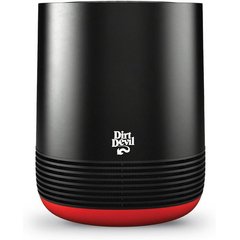Hamster Care Sheet
Overview
Hamster Level of Care
Beginner
Hamster Lifespan
Hamster Roommates
The hamster species kept as pets are solitary and should be housed alone.
Recommended Products
Hamster Handling
Handling Considerations
Hamsters who are stressed or scared will readily bite and care must be taken with handling them. Well-socialized and unstressed hamsters can be carried in two cupped hands. They are very active and move quickly and don’t typically enjoy being held for long periods. Hamsters who aren’t used to being handled yet can be picked up in containers like hamster balls or small carrying cages.
Recommended Home
Environment
Hamsters can do well in almost any room of the house. However, rooms with wide temperature fluctuations, direct sunlight on the hamster enclosure, or spots directly in front of open windows, air conditioners, or heating vents aren’t recommended.
Pet Parents
Hamsters are an appropriate pet for adults and children who are old enough to safely handle them. Hamsters are small and fragile, very fast moving, and will bite if stressed or scared. Small children often hold them too tightly, which may cause injury. As a result, older children who are comfortable holding them are a better fit.
Other Pets Hamsters Can Live With
No other animals can live in an enclosure with a hamster. Due to their small size and fast movements, it also isn’t safe to keep hamsters loose with other animals around. You can keep pets like cats and dogs in the same household as your hamster, but extra care must be taken to make sure their enclosures are secure.
Family Friendliness Level
Hamsters do well in family homes. They typically enjoy the extra stimuli of having several family members interacting with them and they do OK with foot traffic and sounds. Care must be taken with small children to make sure they know how to safely touch the hamsters and keep their fingers away from the openings in the enclosure.
Hamster Habitat
Enclosure
Hamster enclosures need to have at least 150 square inches of floor space with a solid floor and wire sides and tops. Bar spacings should be half an inch. Hamsters are escape artists—they can chew through plastic, wood, and even soft metals and learn to open cage doors. Many hamster parents add tunnel extensions to enclosures, but they must be thoroughly cleaned weekly and made from solid materials such as plastic. You also want to provide a hide box and a running wheel within the enclosure.
Bedding
A thick layer of bedding several inches deep should be provided so hamsters can burrow. Optimal bedding materials include unscented and un-dyed toilet tissue or recycled newspaper products. Wheat straw or aspen shavings are also alternatives.
Bagged “fluff” beddings are not recommended as they are an ingestion and obstruction risk, in addition to posing the risk of wrapping around and strangulating paws.
Never use cedar shavings as these are toxic to hamsters.
Feeding Dishes
Hamster food is typically placed into small bowls located in the cage. Heavier materials like ceramic crocks are preferred as they are harder to tip over. Be sure to clean your hamster’s bowl daily.
Hamster Diet & Nutrition
Main Food
The bulk of a hamster diet should come from a commercial pelleted diet with a 15-25% protein content. Unlike many other smaller pocket pets, too much fresh produce can cause diarrhea in hamsters and extra care must be taken to choose produce that is high in fiber, or it must be offered in moderation. Hamsters hoard and hide food so offering fresh produce can lead to spoilage. It is best used as a treat.
Water
Water should be provided in sipper bottles that are cleaned when refilled. Be careful to examine the tips of the bottles for chewing damage, and inspect the bedding below the bottle daily for accumulated moisture. Spot clean as needed.
Treats
Commercial hamster treats are readily available, including yogurt drops and dehydrated fruits. Fresh fruits and vegetables also work great as treats, especially during time out of the enclosure so hamsters can’t store the fresh food where it might spoil.
Supplements
Hamsters fed from a nutritionally complete pellet diet don’t need any supplements unless a veterinarian has identified a specific nutritional deficiency.
Foods to Avoid or Are Toxic:
-
Apple seeds
-
Raw beans
-
Raw potatoes
-
Almonds
-
Citrus
-
Garlic
-
Onions
-
Chocolate
-
Sugary foods
-
Salty foods
-
Red Meat
Hamster Daily Care
Feeding
Hamsters are nocturnal, so it is recommended to offer new food in the evenings or before bed. Hamsters should generally be offered about a tablespoon of food daily, although this can vary by species so it’s always recommended to check in with your vet about your pet’s needs and current body condition.
Grooming
Hamsters rarely have any grooming needs from their humans. They do a very good job of grooming throughout the day and keep themselves very clean. Long-haired hamsters occasionally need help removing debris from their hair. In this case, they can be brushed with hamster-specific soft brushes.
Exercise
Hamsters are very active pets. They enjoy running, climbing, and tunneling. You can support these habits in a number of ways:
-
Maintain bedding several inches thick in the enclosure for tunneling and burrowing.
-
Include a running wheel that’s at least 8 inches in diameter and made from a solid material so their toes can’t get stuck.
-
Tunnels can be included in the enclosure or in a separate play area, but care must be taken to clean the tunnel weekly. Tunnels must be made of a solid material (like plastic).
-
Exercise balls must be about 7–8 inches in diameter and cleaned after every use. Use tape to secure the lid so it can’t open accidentally.
Disinfecting/Cleaning
Every week, all bedding should be removed from your hamster’s enclosure, all surfaces cleaned, and bedding replaced. Use small pet enclosure–specific cleaners or diluted vinegar to clean the enclosure. Tunnels can be submerged in diluted vinegar to soak. Inspect the enclosure for areas you hamster may chew and check that all doors and edges close and attach properly.
Enrichment
Hamsters are high energy and super chewers. Provide various toys for running, climbing, and tunneling in addition to wooden toys to chew.
Hamster Veterinary Care
Annual Care
Your hamster needs to be seen by a veterinarian once a year for a wellness exam. Be sure to transport them in a secure carrier or take their entire enclosure. If transporting just your hamster, take pictures of their enclosure and all the products you use. Your veterinarian will want to assess their setup as part of the examination process.
Signs of a Healthy Hamster
-
Alert, curious disposition
-
Clean hair coat with no hair loss
-
Clear, shiny eyes
-
Clean nares
-
Clean ears
-
Nails and teeth that are not overgrown
Call a Vet If You See:
-
Weight loss
-
Wet, fecal-stained hair around rectum
-
Wounds or trauma
-
Lumps
-
Coughing, wheezing, sneezing, nasal discharge, or other respiratory difficulties
-
Diarrhea
-
Anorexia
-
Drooling
-
Overgrown teeth
Common Conditions in Hamsters
-
Diarrhea
-
Wet tail
-
Bite wounds
-
Demodectic mange
-
Malocclusion
-
Hairballs
-
Gastrointestinal foreign bodies
-
Hypothermia
-
Amyloidosis
-
Cardiomyopathy
-
Rectal prolapse
-
Stroke
-
Diabetes
Hamster FAQs
Is a hamster easy to take care of?
Hamsters are remarkably easy to take care of. They have smaller housing needs than most pets, create little noise or smell, can function independently when you’re busy, have curious dispositions, and need enclosure cleanings just once a week.
What are the Dos and Don’ts for hamsters?
-
Do provide multiple outlets for exercise and chewing to support dental and mental health.
-
Don’t use cedar shavings, provide too much fresh produce for food, or leave enclosure doors unsecured.
Do hamsters need to be handled every day?
Yes, it is recommended to handle your hamster at least once daily. Though they don’t enjoy being held for long periods of time, picking them up daily will keep them comfortable with handling. This also lowers the risk of bites, allows you to inspect them for health issues, and enables them to be transported to exercise balls or play tunnels for enrichment.
Do hamsters like to be held?
Most hamsters do not enjoy being held for long periods of time. They can be picked up for quick petting, then offered a treat before being placed down again somewhere secure. They do enjoy interacting with their humans but do not like to sit still.
Featured Image: iStock.com/abalcazar




